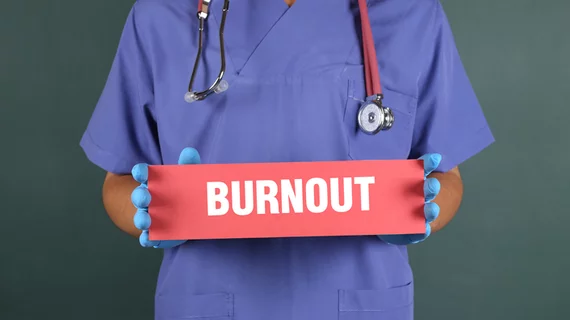AMA: Examining a doctors’ health data can help detect burnout
The American Medical Association (AMA) said more than 50% of physicians reported feeling burned out over the past three years, and this has led to large numbers retiring or changing jobs at a time when many specialties are already facing physician shortages and increasing demands for care. To combat this, the AMA House of Delegates (HOD) recently adopted a policy directing the AMA to conduct ongoing research using health data on the physicians themselves to identify and better understand workplace stressors.
Research using electronic health record (EMR) data on patients is common to identify trends in population health or specific diseases, but it has not been commonly used to research trends in physician health and well-being. The AMA has made a concerted effort to find new ways to fight burnout since the COVID-19 pandemic amplified stresses, which caused more than 60% of physicians to report feeling burned out in AMA surveys during COVID.
The new policy calls for the AMA to monitor and report on the research regarding the effective use of personal and biological data to assess the wellbeing of the healthcare professional workforce. The HOD said this research should be used to and inform organizational interventions to help mitigate burnout.
The policy also calls on the AMA to develop ethical guidelines on the collection, use and protection of personal and biological data to improve the professional workforce well-being.
The new HOD action builds on the AMA’s research on physician burnout, which has shaped the collective understanding of the underlying causes and the effects it has on physicians, patients and healthcare organizations. AMA research has highlighted the system-level issues that drive burnout, and the steps organizations can take to coordinate solutions for effective changes.
“As the leader in physician well-being, the AMA is reducing physician burnout by removing administrative burdens and providing real-world solutions to help doctors rediscover the joy of Medicine,” the AMA said in a statement.
This alludes to a step the AMA has taken with the creation of the Joy in Medicine Health System Recognition Program. It is designed to empower health systems to reduce burnout, complete with a roadmap to implement programs and policies that actively support well-being, building a culture committed to increasing joy in medicine.
The financial and clinical impacts from physician burnout
Physician burnout has economic costs as well as financial costs associated with staff turnover, lost revenue, and decreased productivity. The AMA said it is also increases risks to the organization from lower quality of care and potential for more frequent medical errors.
The AMA reported roughly two of every five U.S. physicians intended to reduce their clinical work hours in the next year, more than double previous rates.
“These findings have potentially profound implications for the adequacy of a U.S. physician workforce already facing substantial shortages,” the AMA said.
Primary care physician turnover alone is costly and results in nearly $1 billion in excess health care expenditures. A significant portion of this excess cost, $260 million, the AMA said based one one study.[1]
Factors related to physician burnout
AMA research found numerous factors affecting physician professional satisfaction. This includes perceived work overload, chaotic workplaces, childcare stress, cognitive task load, and work-life integration.
Childcare stress was associated with 80% greater odds of burnout in all healthcare workers one JAMA article found.[2] The findings suggest there is an association between reporting high childcare stress and burnout, and programs to reduce childcare stress may be beneficial for workers and health systems. This burnout, combined with childcare worries, led to a nursing shortage during and since COVID.
The AMA review of literature on burnout suggests that healthcare workers (especially nurses and other clinical staff) feel unable to meet unrealistic demands for productivity and efficiency, which has downstream effects on well-being and work intentions.

